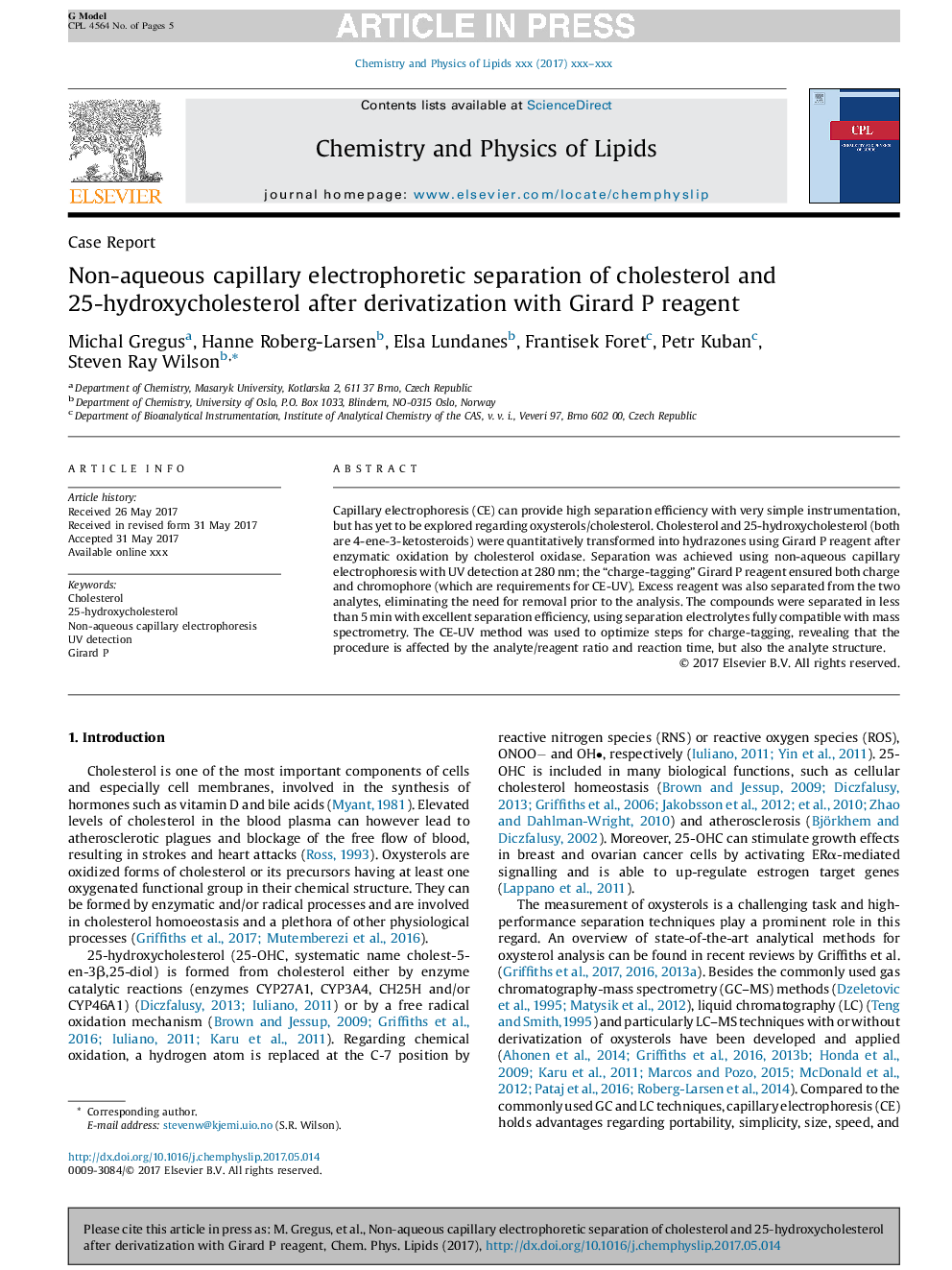| Article ID | Journal | Published Year | Pages | File Type |
|---|---|---|---|---|
| 5142601 | Chemistry and Physics of Lipids | 2017 | 5 Pages |
Abstract
Capillary electrophoresis (CE) can provide high separation efficiency with very simple instrumentation, but has yet to be explored regarding oxysterols/cholesterol. Cholesterol and 25-hydroxycholesterol (both are 4-ene-3-ketosteroids) were quantitatively transformed into hydrazones using Girard P reagent after enzymatic oxidation by cholesterol oxidase. Separation was achieved using non-aqueous capillary electrophoresis with UV detection at 280Â nm; the “charge-tagging” Girard P reagent ensured both charge and chromophore (which are requirements for CE-UV). Excess reagent was also separated from the two analytes, eliminating the need for removal prior to the analysis. The compounds were separated in less than 5Â min with excellent separation efficiency, using separation electrolytes fully compatible with mass spectrometry. The CE-UV method was used to optimize steps for charge-tagging, revealing that the procedure is affected by the analyte/reagent ratio and reaction time, but also the analyte structure.
Related Topics
Physical Sciences and Engineering
Chemistry
Chemistry (General)
Authors
Michal Gregus, Hanne Roberg-Larsen, Elsa Lundanes, Frantisek Foret, Petr Kuban, Steven Ray Wilson,
